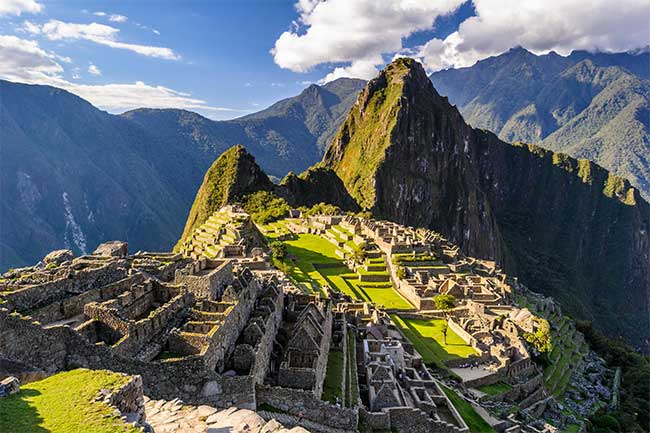The reason the Incas built Machu Picchu on two fault lines
The rupture of the Earth's crust provided a suitable source of granite to help the Incas save the energy to build Machu Pichu.
Rualdo Menegat, a geologist at the Federal University of Rio Grande do Sul, presented the new discovery of the ancient city of Machu Picchu at the annual meeting of the American Geological Association earlier this week. Using satellite imagery and field data, Menegat examines the network of fissures below Machu Picchu, from small cracks running through boulders to a 172km-long fault in the river valley.

Machu Picchu Citadel.(Photo: Smithsonian).
Some fissures run northwest-southeast while others have northwest-southwest directions. In the middle, where two large crevices intersect in an X-shape is Machu Picchu. According to Menegat, the Incas are more likely to choose the crevice network not for religious or symbolic reasons. Instead, the fault breaks granite boulders into small pieces, saving energy in the process of building a stone settlement. The walls of the old citadel also turned in the direction of the fault.
" The location of Machu Picchu was not an accidental selection. The strong fault there caused the rock to crack along the plane, so that the Incas reduced their efforts to trim , " Menegat said.
In addition to allowing the Incas to easily find and assemble stones without using mortar, faults also offer many other benefits. The fault line runs through the area that leads to melting snow and rainwater to the settlement. The crack network below Machu Picchu also helps to absorb water. This is one of the reasons that works can last so long.
"To me, no civilization can form in the Andes without knowing the region's rock and mountains. Machu Picchu is not an isolated case of the Inca Andes' survival strategy" , Menegat said.
Other Inca citadels including Ollantaytambo, Pisac and Cusco, all built at the intersection of the fault line. This does not indicate that the Incas have a broad knowledge of plate tectonics. Most likely they were just looking for areas filled with broken triangles and rhombus, which can be put together to build walls.
Archaeologists believe that Machu Picchu was built around 1450 at the order of Emperor Pachacuti Inca Yupanqui. The citadel is said to be the residence of the emperor and the Inca aristocracy. When the Spanish invaded South America, wars and epidemics caused the Inca empire to collapse. Machu Picchu and many other places are abandoned. In 1911, Professor Hiram Bingham III at Yale University discovered the weed-covered ruins of the settlement thanks to the guidance of the locals. Today, Machu Picchu is a World Heritage Site and is threatened by overcrowding of tourists.
- The mysterious Machu Picchu ruins built by aliens?
- A century of discovering the wonders of Machu Picchu
- Mystery Machu Picchu mysteriously built by aliens?
- A century of wondrous discoveries Machu Picchu
- The wonderful beauty of the sacred valley of the Incas
- The great trail of the Inca empire
- Inca trail
- 10 most mysterious places on the planet
- 12 mysterious lands in the world
- Machu Picchu aerial city - Peru
- July 7: New7wonder organization announces the New Seven Wonders of the World
- The reason why power lines are dimmed
- The Incas saw gold as the sweat of the Sun God
- The inscriptions of the Incas are hidden in knots
 'Fine laughs' - Scary and painful torture in ancient times
'Fine laughs' - Scary and painful torture in ancient times The sequence of numbers 142857 of the Egyptian pyramids is known as the strangest number in the world - Why?
The sequence of numbers 142857 of the Egyptian pyramids is known as the strangest number in the world - Why? History of the iron
History of the iron What is alum?
What is alum?